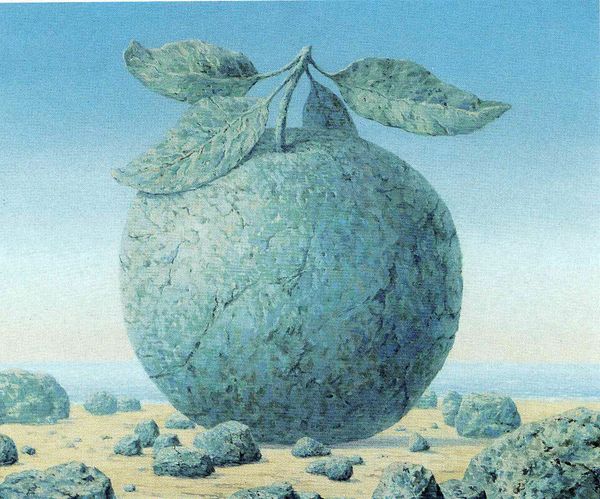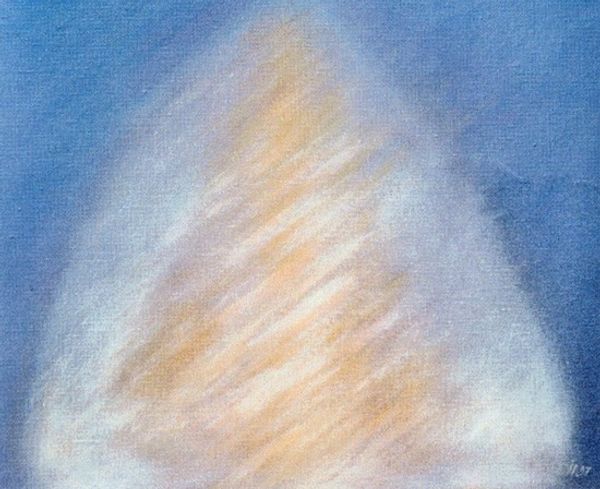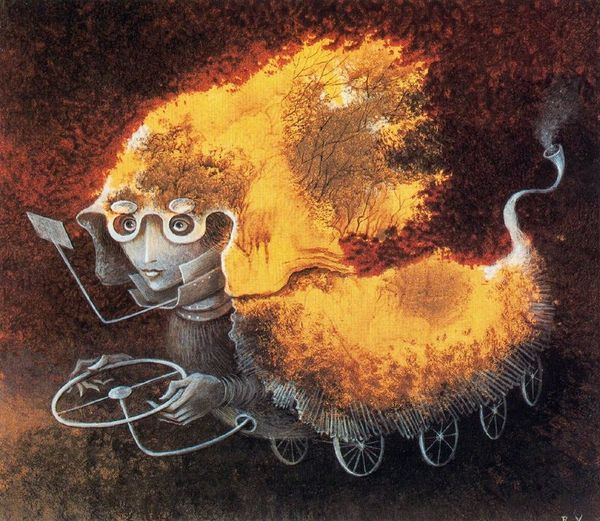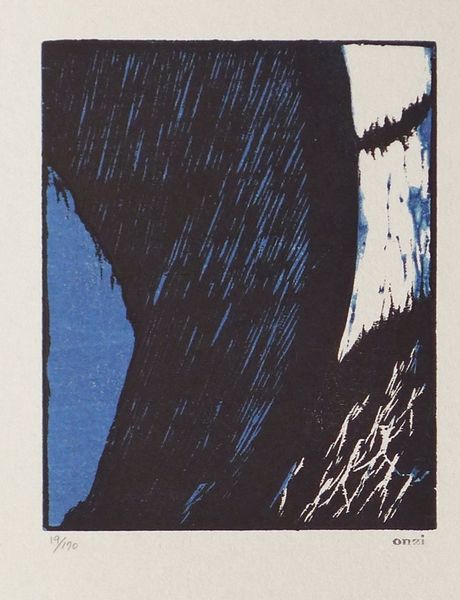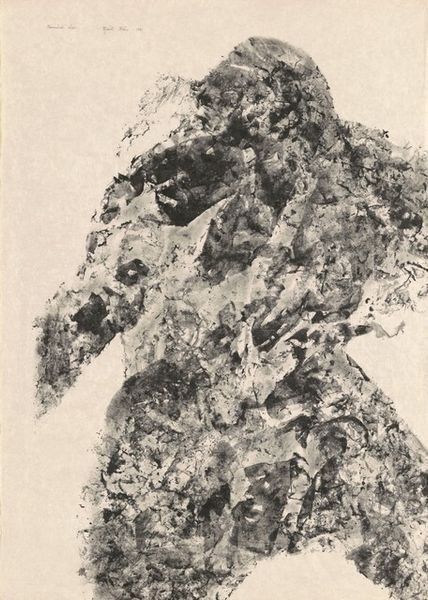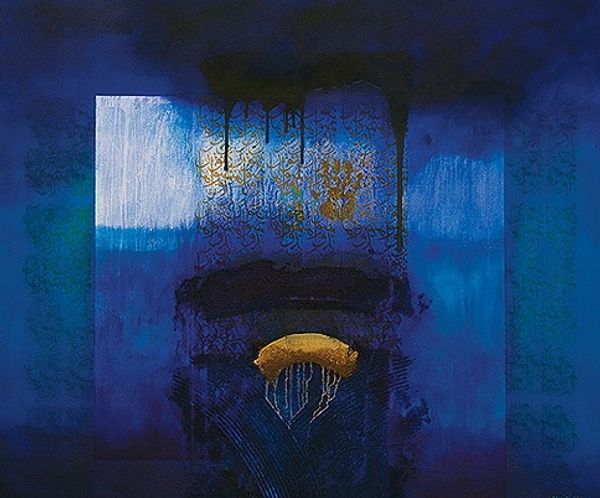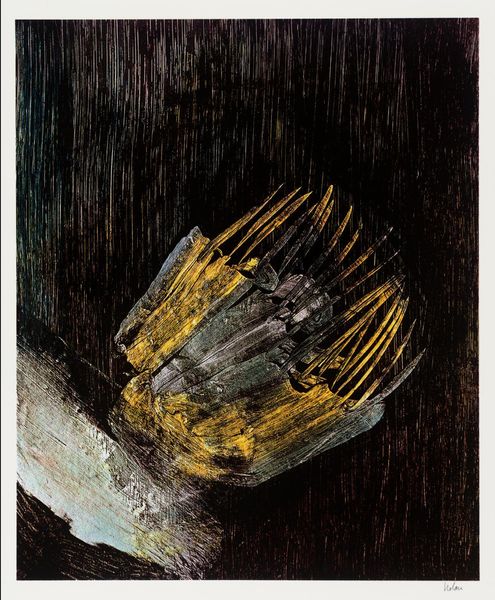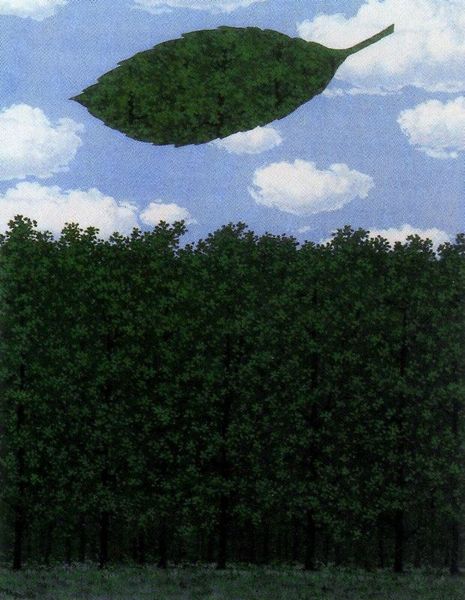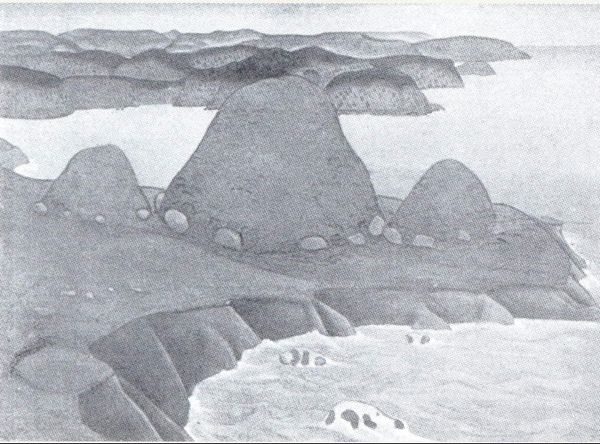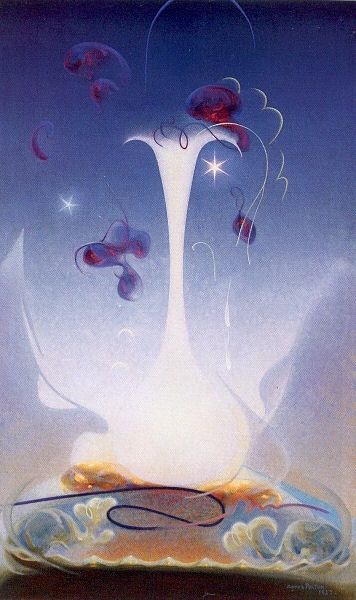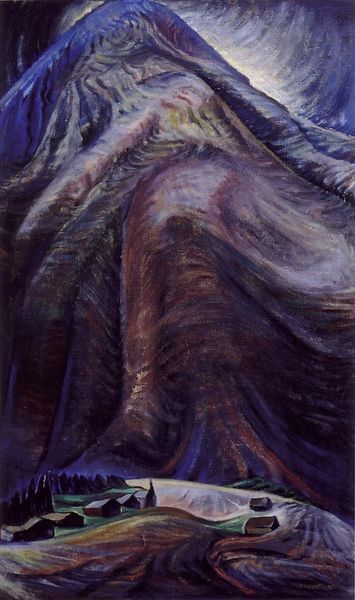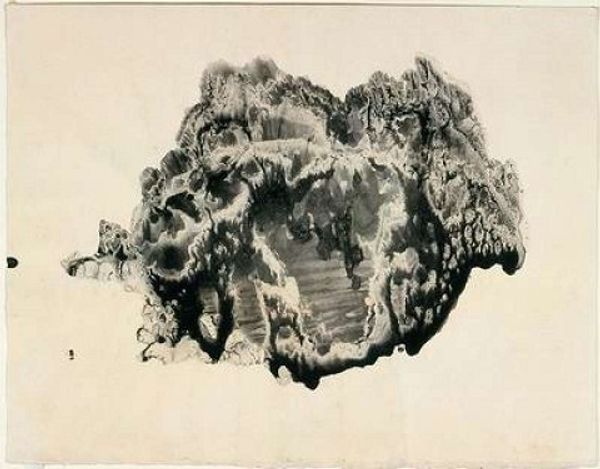
oil-paint
#
oil-paint
#
landscape
#
oil painting
#
abstraction
#
surrealism
#
modernism
Copyright: Felix Labisse,Fair Use
Curator: The overwhelming blue certainly makes an impression! The composition suggests something almost otherworldly. What is your take? Editor: That somber palette resonates deeply, especially given that this oil painting, “Libidoscaphe Epongeur,” was conceived by Felix Labisse in 1962, amidst sociopolitical tensions and evolving artistic landscapes of post-war Europe. It certainly taps into an existential vein. Curator: Absolutely. Consider the term “Libidoscaphe”; that concept of a vessel or vehicle for libidinal energy, fused with ‘épongeur,’ the sponge—it evokes porous boundaries between self and other, individual and collective consciousness, doesn't it? Labisse, as a figure closely associated with Surrealism, consistently destabilized fixed meanings. Editor: Indeed. Looking at the formal qualities, the textural contrasts create compelling tension. The smooth surface of the "water" meeting that convoluted, porous mass above creates an unsettling contrast, like a sponge that’s almost petrified. What could it signify beyond that tension? Curator: Well, knowing that Labisse positioned himself within a milieu that challenged conventional sexual and social norms—a lot can be deciphered from that perspective. The phallic form and watery milieu cannot be ignored from the stand-point of gender fluidity studies. This would echo ideas present at the time challenging conservative sexualities. Editor: I’m interested in those "holes" or the “pores" on this floating mass which disrupt its overall volume—they create rhythmic patterns that play with the surface quality, denying absolute definition. Curator: It underscores a concept that nothing remains isolated. Labisse challenges our tendency toward definition and fixed understanding. It could be viewed from intersectional themes within queer studies regarding the porousness between identity, gender expression and desire. Editor: Considering your interpretation, the abstraction blends into something more, opening discussions within and across academic fields. This work allows for myriad insights, each layered with nuance. Curator: Agreed! Hopefully, our insights provide a fresh consideration of “Libidoscaphe Epongeur”, where abstract form engages sociopolitical history. Editor: This was illuminating. Hopefully we encourage others to find unique forms, compositions and artistic interpretations within Labisse’s visual language!
Comments
No comments
Be the first to comment and join the conversation on the ultimate creative platform.
